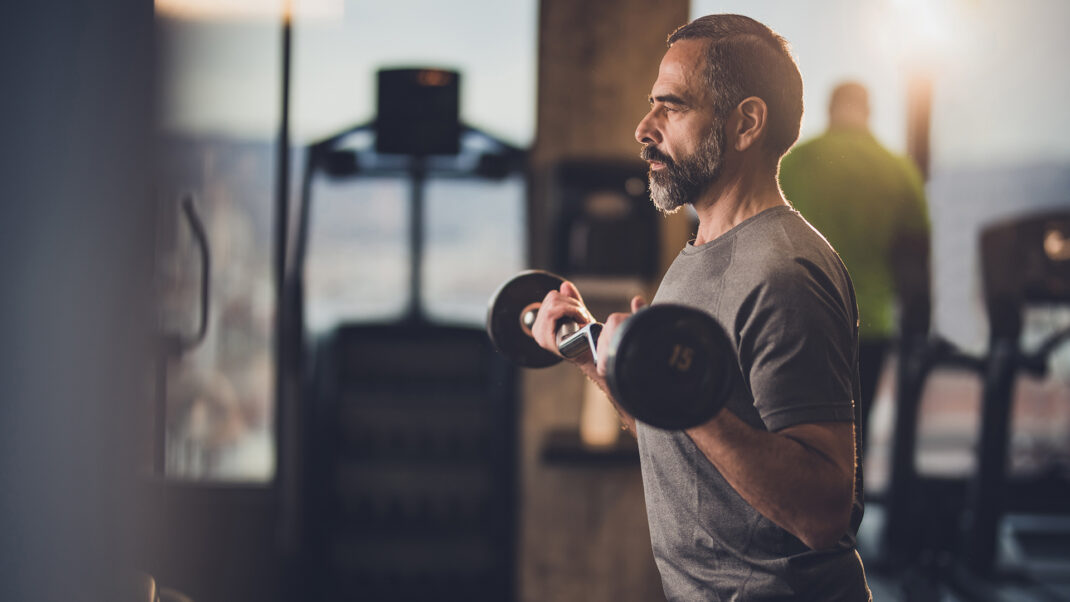A Ball for All
Offer students options as they progress in their core strength.
The stability ball has been used by physical therapists for years, and the fitness industry has fully embraced this tool for group exercise and private training. The stability ball creates an unstable surface and can be used for strength, balance, coordination, agility, core work and flexibility. Some of my favorite exercises challenge both balance and core strength.
For review purposes, keep the following in mind:
- When a participant sits on the ball, there should be about 90 degrees of flexion at the knee and hip joint.
- A beginner may want to use a ball that is just a bit underinflated because that makes the ball more responsive to the body.
- If a participant complains of discomfort during a movement, stop immediately and re-examine form and technique.
- Start each exercise gradually.
- Make sure there is enough space to move around each student.
- Instruct proper form and technique for each exercise, step by step.
Great for beginners, this exercise teaches them how to use abdominal bracing to help train the core without lifting the head and stressing the cervical spine. Start supine on the floor, knees bent. Place the ball on the knees and lift the feet off the floor so the knees are at 90 degrees (ball will be resting on torso). Both arms are straight and pressing against the ball. Cue students to contract the abdominals and press both arms against the ball as if they were two blades. The legs press into the ball at the same time. Hold this isometric contraction for 10–15 seconds; then do 2 more repetitions, holding for 20–30 seconds each time. Once students are comfortable with the main exercise, you can have them extend the opposite arm and leg simultaneously while holding the contraction. Make sure they maintain neutral pelvis, engage their abdominals and breathe during the contraction (you don’t want them holding their breath).
The pike, or sea urchin, helps develop spinal stabilization by requiring the core musculature to stabilize against dynamic challenge. Begin prone over the ball. Assume a push-up position with the ball under the thighs. Hold this position, keeping the spine in neutral. Once stabilization is mastered, add a challenge by flexing the spine and hips slightly while rolling the ball forward. Return slowly to the prone plank position.
Watch that the back neither sags nor hyperextends. Keep the head and neck in neutral. If a student has weak wrists, she can either do the same exercise on her forearms or place dumbbells (that do not roll) on the floor to elevate her hands. Just holding the prone position can be a challenging core workout.
This exercise challenges balance, coordination, focus and core strength. As in the pike exercise, begin prone over the ball. Assume a push-up position, ball resting under the thighs. Hold this position, keeping the spine neutral. Once stabilization is mastered, add a challenge by lifting and abducting one leg off the ball. Replace that leg, and try the same move with the other leg. Once that is mastered, lift one leg off of the ball, abduct, and then rotate and bend the lifted leg under the other leg. Return to the start position, and repeat on other side.
Norma Shechtman, MEd, MA, was named the 2003 ACE Group Fitness Instructor of the Year. She is currently the Pilates coordinator for The Sports Club in Los Angeles and in Orange County, California.
Norma Shechtman, MEd, MA
Norma Shechtman, MEd, MA, teaches cycling, Pilates and a full array of classes in Orange County, California. An award-winning fitness professional, Norma, has been involved in fitness and education for over 30 years. She is an author, script writer, TV personality and correspondence course reviewer. And in addition to holding double master’s degrees in kinesiology and education, she is certified by multiple organizations, including USWFA, Pilates, Schwinn® and Spinning®. Certifications: ACE, AEA, AFAA, NASM, NESTA






